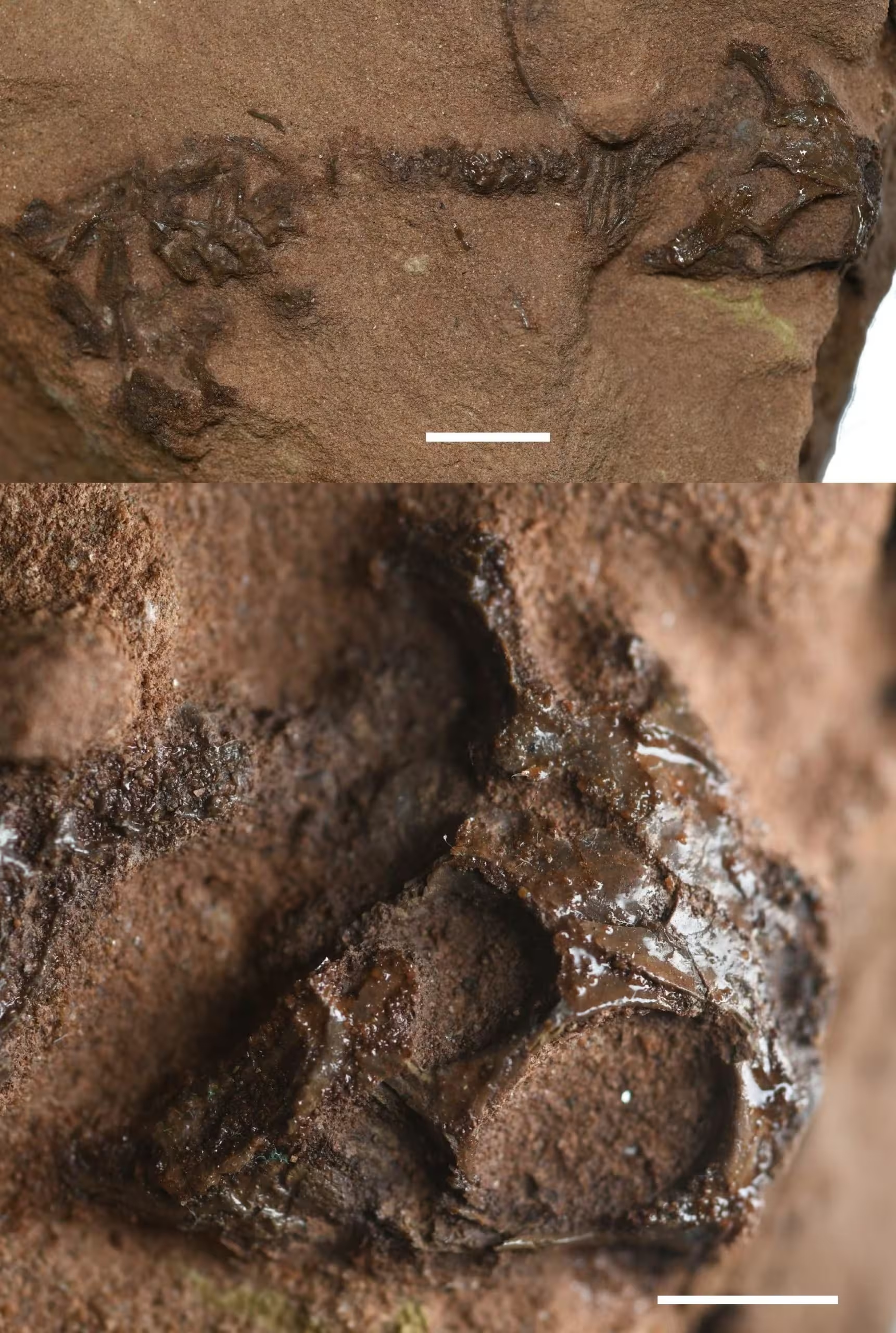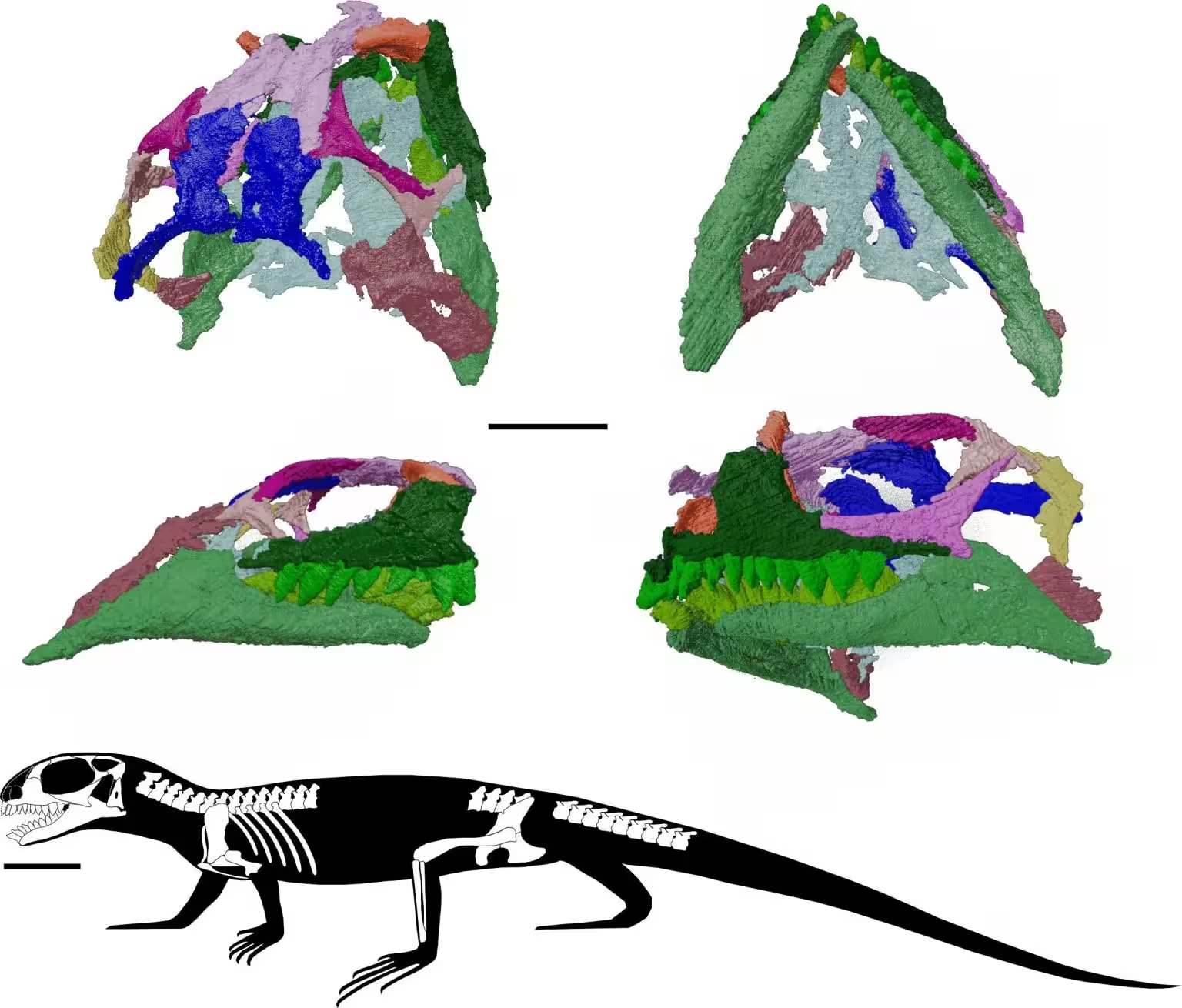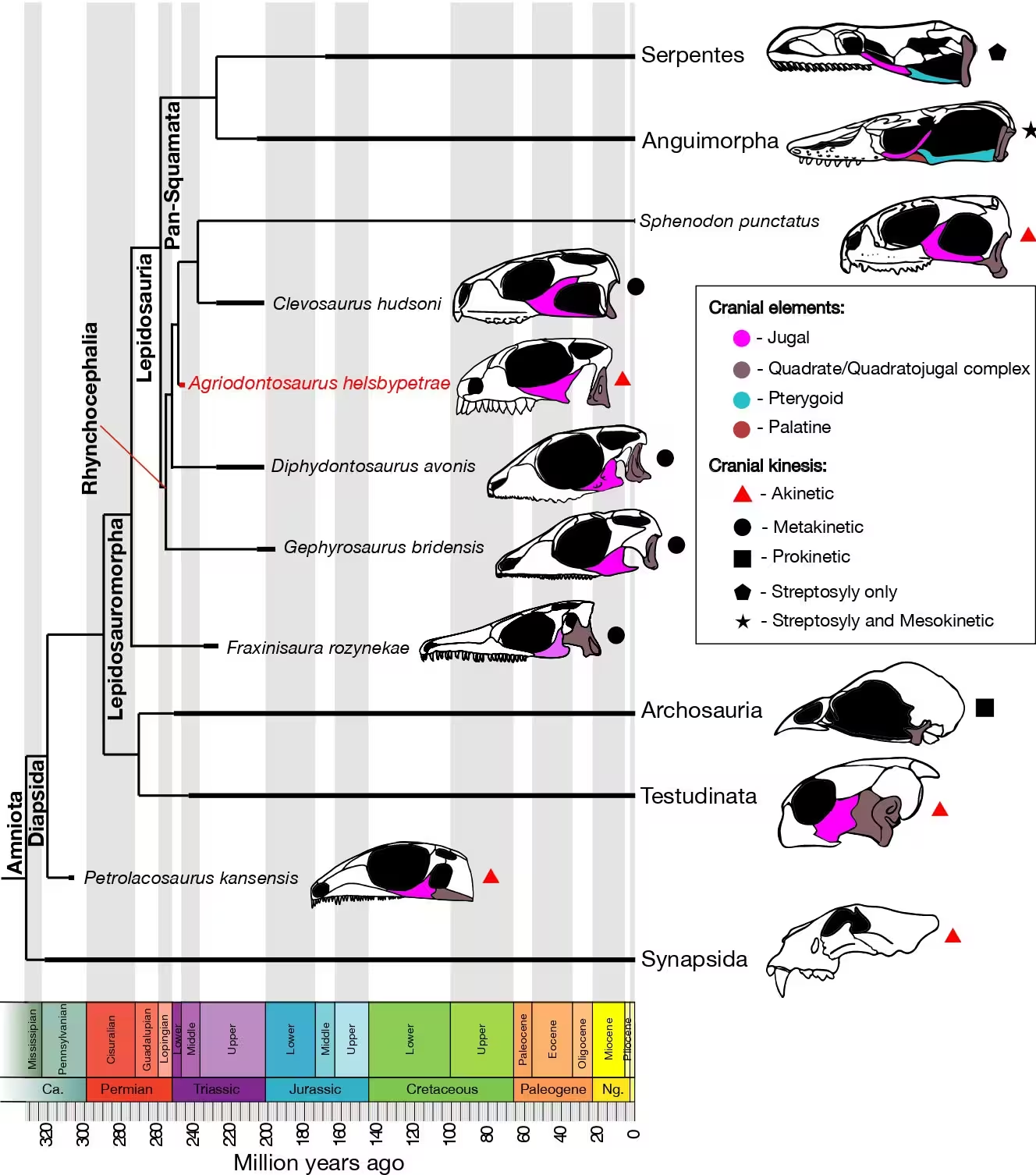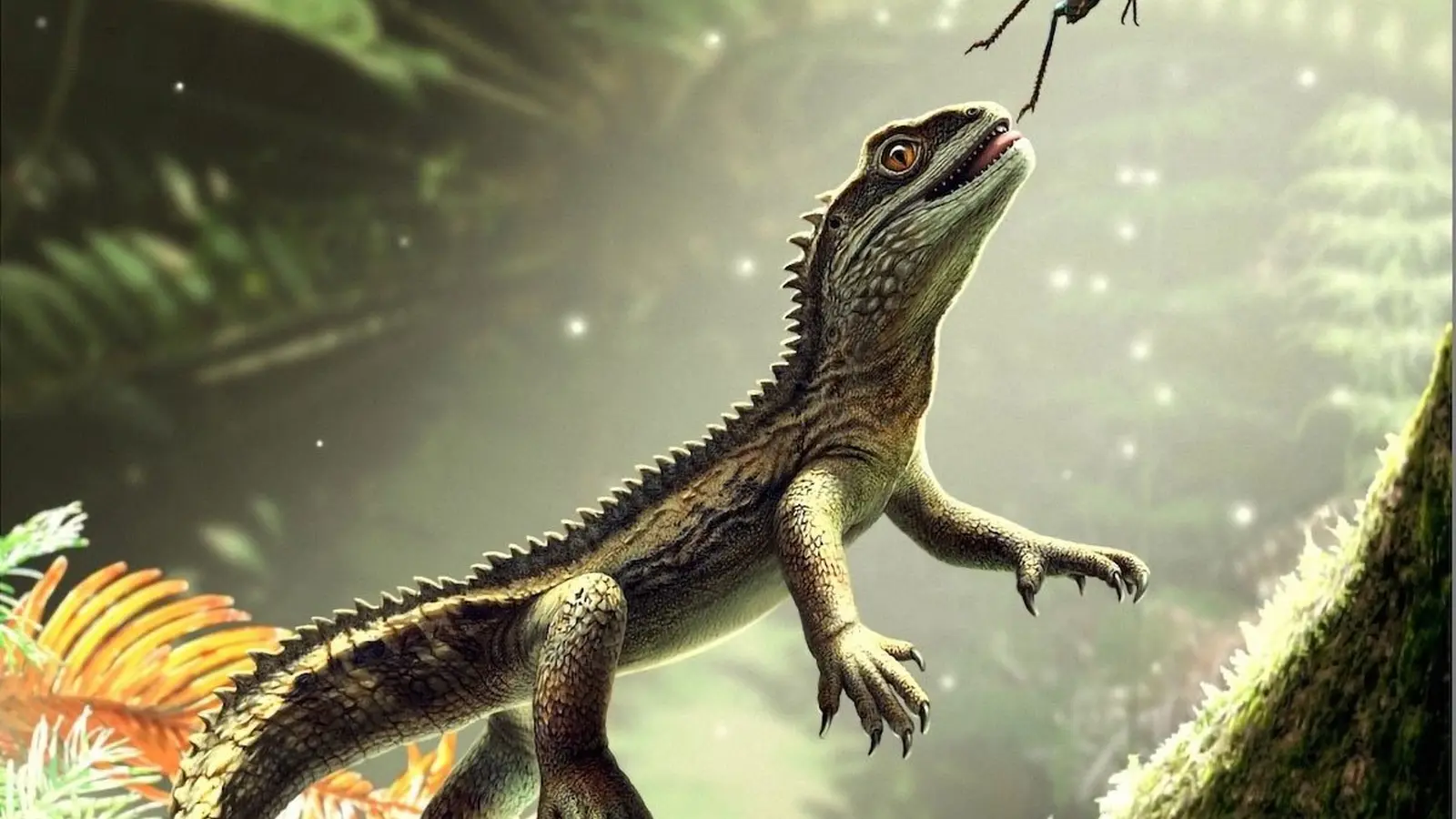6 Minutes
A well-preserved Triassic reptile challenges assumptions about early lizards
Lepidosaurs—the group that today includes lizards, snakes, and the tuatara—are the most species-rich clade of terrestrial vertebrates, with more than 12,000 living species. A newly described fossil from the Middle Triassic (about 242 million years old) recovered from the Helsby Sandstone Formation in Devon offers unexpected anatomical details that force a rethink of how early lepidosaurs evolved key skull and tooth features. The research, led by students and staff at the University of Bristol and published in a major journal, combines traditional fieldwork with high-resolution imaging to reveal a small but unusually informative specimen.
Discovery and specimen description
The fossil is extremely small—the skull measures roughly 1.5 cm in length—but it preserves enough cranial material to reveal surprising traits. Previously, paleontologists expected the earliest lepidosaurs to already show a combination of: 1) a partially kinetic (flexible) skull allowing wide gape, 2) an open lower temporal region (loss of a bony cheek bar), and 3) palatal teeth (rows of teeth on the roof of the mouth). These features are prominent in many modern snakes and lizards and are associated with diverse feeding strategies.
Contrary to these expectations, the new specimen lacks palatal dentition and shows no evidence of a hinge-like skull kinesis. It does, however, display an open lower temporal bar—the same configuration seen in most modern lizards and snakes. At the same time, it bears disproportionately large, triangular teeth compared with closely related fossils, suggesting a feeding ecology adapted to piercing and shearing hard-bodied invertebrates.

Holotype specimen of Agriodontosaurus helsbypetrae, BRSUG 29950-14; and close-up of preserved skull. Scale bars: 10mm and 5mm, respectively.
The authors named the species Agriodontosaurus helsbypetrae—literally a ‘‘fierce-toothed lizard from the Helsby rock’’. The holotype provides an anatomical snapshot that sits partway between primitive and derived conditions within Lepidosauria, indicating that important skull and dental adaptations evolved in mosaic fashion rather than all at once.
Imaging technology and methods
Because the specimen is so small and delicate, the research team relied on advanced imaging rather than aggressive preparation. Synchrotron X-ray tomography—an ultra-high-resolution CT technique—was used at two large facilities to image the fossil non-destructively. These scans resolved minute anatomical details, letting researchers digitally separate and reconstruct individual skull bones and tooth shapes.

Three-dimensional model of the skull of A. helsbypetrae, reconstructed using synchrotron tomography. The silhouette illustrates the individual elements preserved in the holotype specimen.
Synchrotron tomography allowed the team to identify the absence of palatal teeth and to map the arrangement and morphology of the large marginal teeth. This combination of scanning and 3D reconstruction is transforming fossil studies by revealing microstructures that are invisible in conventional X-rays or under a microscope.
Evolutionary implications: mosaic evolution and lepidosaur success
The new fossil supports a mosaic model of evolution for early lepidosaurs: different skull and dental features appeared in separate lineages and at different times. Rather than a single ‘‘lizard blueprint’’ emerging early, traits such as open cheek architecture, palatal teeth, and skull kinesis appear to have been gained, lost, or modified independently across early branches of the group.
This nuanced pattern matters for interpreting how lepidosaurs diversified. Palatal teeth, large piercing teeth, and different degrees of skull flexibility each confer distinct feeding advantages—grasping small prey, processing insect exoskeletons, or swallowing large items—so piecemeal acquisition of these features could help explain the broad ecological diversity of the group through deep time. The discovery also reframes the evolutionary context of the tuatara, which retains several ancient traits: the fossil record suggests the tuatara lineage was once much more varied than the single living species might imply.

Phylogenetic tree showing the variation of the lower temporal bar and skull flexibility (modes of kinesis) in fossil and living amniotes (lizards, birds and reptiles).
Fieldwork and provenance
The specimen was found eroding out of coastal exposures in Devon, a region that has yielded fossils for more than a century. Because only a small portion of the skeleton was initially visible, careful excavation and digital imaging were essential. The specimen is cataloged as BRSUG 29950-14 and is curated so other researchers can re-examine it as methods continue to improve.
Expert Insight
Dr. Elena Ruiz, a vertebrate paleontologist and science communicator, commented: "This fossil is an excellent example of how tiny specimens can have outsized impact. The absence of palatal teeth and lack of skull hinging in a 242-million-year-old lepidosaur shows evolution does not follow a single linear path. Each trait must be assessed in ecological and phylogenetic context."
Her remark highlights the broader point: combining precise imaging with careful comparative anatomy yields richer, more accurate reconstructions of ancient life.
Conclusion
Agriodontosaurus helsbypetrae deepens our understanding of early lepidosaur anatomy and evolution by demonstrating that key skull and dental features evolved in a mosaic pattern. High-resolution synchrotron imaging was critical to resolving these findings in a tiny specimen, underscoring how modern technology can unlock major paleobiological insights from fragments. As new specimens and imaging approaches accumulate, our picture of how lepidosaurs achieved their extraordinary diversity will continue to sharpen—one small skull at a time.
Three-dimensional model of the skull of A. helsbypetrae, reconstructed using synchrotron tomography. The silhouette illustrates the individual elements preserved in the holotype specimen. Credit: Dan Marke
"When I found the specimen back in 2015 on the beach in Devon, I had no idea what it was because there was so little of it exposed," said one of the discoverers, reflecting the serendipity often involved in paleontology. "It’s been great to see such an amazing fossil coming from a site that has been providing fossils for 150 years."
Source: scitechdaily


Leave a Comment